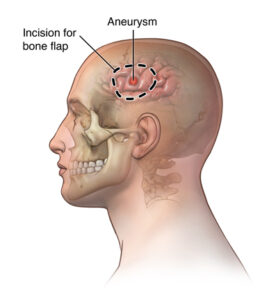Introduction
A craniotomy is a surgical procedure that involves the removal of a portion of the skull to access and treat conditions within the brain. It is performed by a neurosurgeon and is considered a major operation. Craniotomy allows direct access to the brain, allowing for various procedures, such as tumor removal, treatment of vascular abnormalities, repair of brain injuries, or placement of implants for deep brain stimulation.

How Craniotomy Works
During a craniotomy, the patient is placed under general anesthesia, ensuring they are asleep and pain-free throughout the procedure. The neurosurgeon carefully makes an incision in the scalp, creates a bone flap by removing a portion of the skull, and sets it aside. This exposes the brain, allowing the surgeon to access and perform the necessary procedure. Once the procedure is complete, the bone flap is replaced and secured with plates, screws, or wires, and the scalp incision is closed with sutures or staples.
When Craniotomy is Needed
Craniotomy may be required for various conditions, including:
Brain tumors: It may be necessary to remove all or a portion of a brain tumor.
Brain aneurysms and arteriovenous malformations (AVMs): These abnormal blood vessel conditions may require surgical intervention to prevent rupture or alleviate symptoms.
Brain hemorrhage: In cases of severe bleeding within the brain, a craniotomy may be performed to stop the bleeding and relieve pressure.
Traumatic brain injury: In some cases, a craniotomy is performed to treat severe brain injuries and reduce swelling or remove blood clots.
Epilepsy surgery: In individuals with medication-resistant epilepsy, a craniotomy may be performed to remove the portion of the brain responsible for seizures.
Deep brain stimulation: Craniotomy may be required for the placement of electrodes in the brain for deep brain stimulation, a treatment for certain movement disorders such as Parkinson’s disease.







